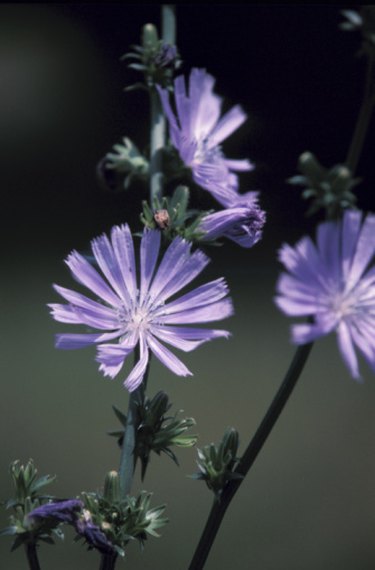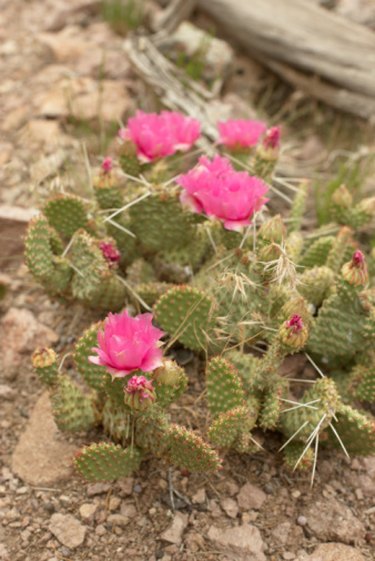
There are several types of North American weeds that grow to impressive heights. Identifying these tall weed plants can help the gardener choose an effective method of weed control. Some gardeners have been able to make their peace with some varieties of weeds, as they can prove to be impressive and unique accent plants, with beautiful blooms, foliage or even edible fruit. Other species appear to have no utility at all and serve simply to consternate the most dedicated of gardeners.
European Invasive Weeds
Video of the Day

Lambsquarters (Chenopodium album) are weeds that grow fast at a rate of 1 or 2 inches per day each spring. These tall stalk weeds can grow up to 6 feet tall. Preferring wastelands, fallow fields and compost piles, its recurrence is relatively easy to eliminate through vigilant weeding, provided the rootstock is removed in its entirety.
Video of the Day
Chicory, however, is considerably harder to eliminate. It grows to about the same height as lambsquarters, albeit more slowly. It has a deep taproot and, once established, chicory (Cichorium intybus) is nearly as hard to eradicate as dandelion, its close relative. The leaves of this plant are used in Europe as the salad green radicchio. Chicory roots are also sometimes used a substitute for coffee when they are dried and ground up.
Asian Invasive Weeds
The noxious Chinese Tree-of-Heaven (Ginkgo quassia) was introduced to the United States as an urban ornamental species on account of its resilience in poor growing conditions. This attribute similarly allowed the species to escape captivity in much of the Midwest and East Coast, colonizing parks and backyard gardens.
This fast-growing species may be the tallest weed plant as it can quickly reach heights of up to 100 feet tall if left unmolested. Attempts to cut down or uproot the Tree-of-Heaven are usually unsuccessful, as the herbicide-resistant rootlets quickly send up new shoots. Patience, monitoring and multiple herbicide applications are required to control these invasive plants.
Central American Invasives

Opuntia stricta and Opuntia ficus-indica are amongst the most difficult to eliminate of desert weeds. They made their way to the United States when Texan ranchers thought they could be used for natural fencing. Once established, this highly adaptable species spread across the continent, becoming hardy as far north as Canada.
Commonly called the prickly pear, these species look like tree cacti made up of flat, oval, spine-covered pads. Both species can reach up to 7 feet in height when mature. Although they are most commonly found in arid or semi-arid environments, they can also be found in the pastures and cropland of the prairie states.
Native Tall Weed Plants
Giant ragweed is the tallest of the native North American weeds. This member of the Ambrosia genus can grow to be as high as 12 feet tall. These tall garden weeds are notorious for causing intense seasonal allergy symptoms among sufferers.
The giant ragweed is an annual most commonly found in the American Midwest, mostly on roadsides and wastelands. It has little or no medicinal or aesthetic value.